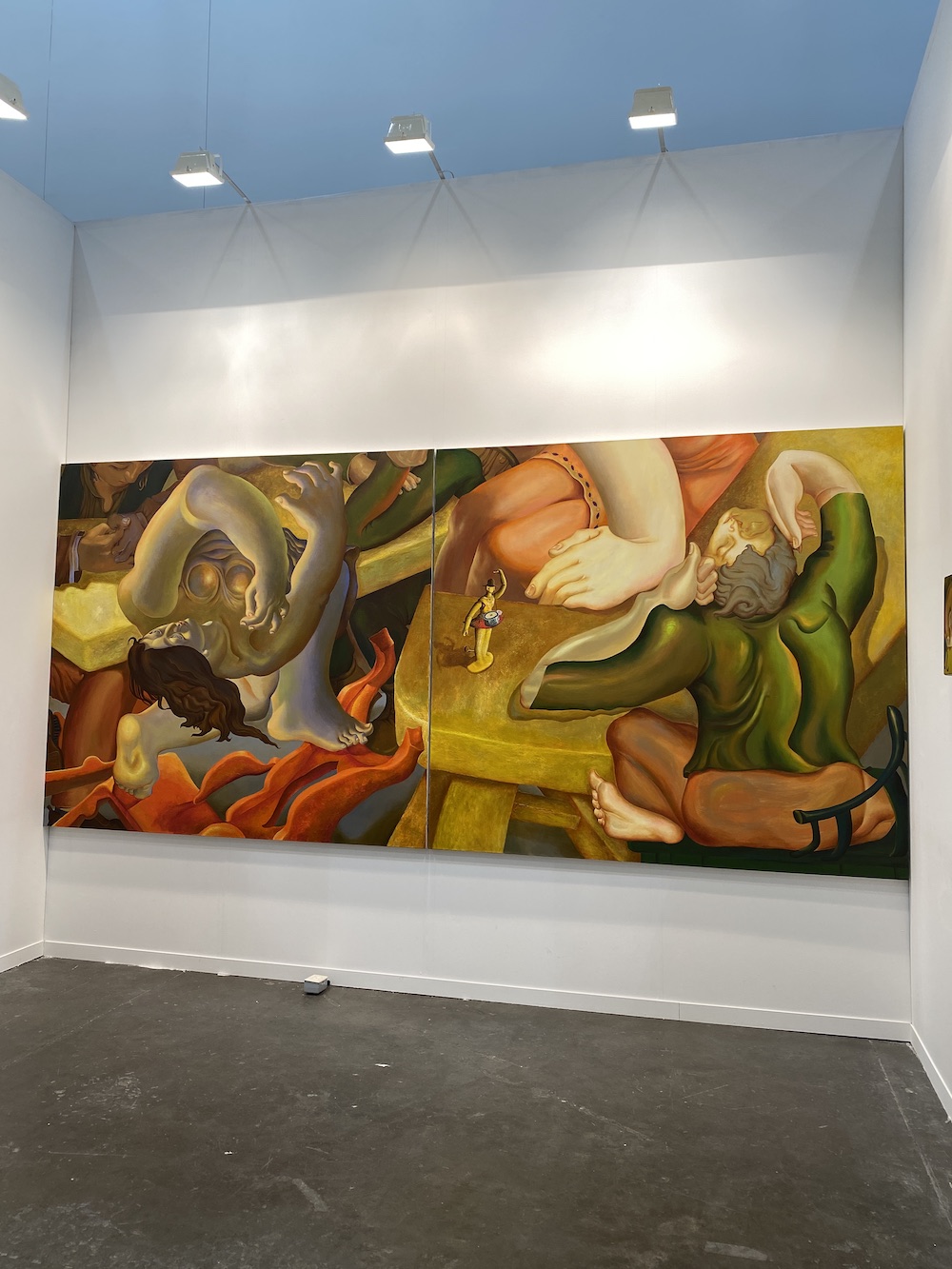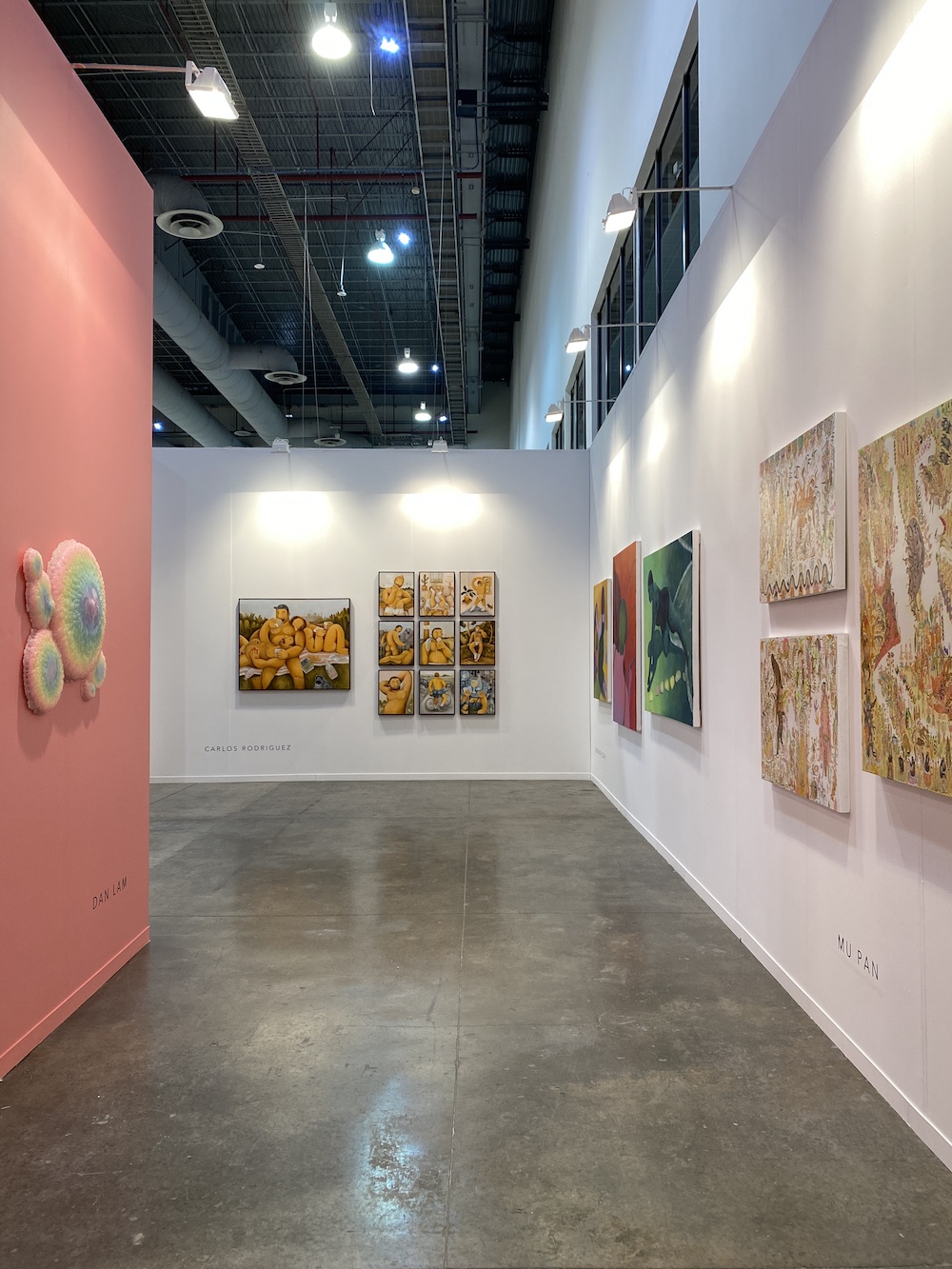Your cart is currently empty!
OUTSIDE LA: Mexico City Art Week 2023

The 2023 Mexico City Art Week kicked off its return last week, the entire city humming with visiting creatives eager to take in all that fairs, galleries, museums and performance spaces had to offer. Zona Maco, running February 8-12th, returned to Centro Citibanamex for its 19th installment of the contemporary fair, while Feria Material, February 9-12th, launched its 9th edition at the Expo Reforma for the first time. Simultaneously, ancillary fairs such as Salon ACMÉ and residency studios such as FÁBRICA hosted independent programming further contributing to the rich, vibrancy of the week.
Presenting an impressively robust roster of evocative gallerists and artists, right at the pulse of high art market buzz, the largest section of Zona Maco favors leading international and local offerings. The sprawling selection of work spanned three main halls at Citibanamex, with the addition of satellite sections of Zona Maco Foto (photography), Salón (antiquities and decorative arts) and Diseño (everyday and design objects).
Of particular note was the overwhelming emphasis on the figural and the bodily among the work on display. Making my way through the dazzling maze of booths, this recurring image registered as a conscious and topical choice meant to highlight a shift towards an ecosystem eager to highlight the deeply internal. Genevieve Cohn’s bright feminine forms at Hashimoto Contemporary (Los Angeles) favored swaths of rich acrylic color and simple, decorative line work, balanced by the delicate gestures of the figures. These individuals appear captured in earnest, almost as if unaware of their participation within the artist’s canvas, and affect a shadowy remnant in their wake. LINSEED Projects (Shanghai) displayed large-scale acrylic on canvas solo project Illuminated Standstill by Zheng Zhilin. Painted in an intimation of the luminescent, curvaceous qualities of Italian Renaissance, the work shines in its fluidity. The vapory bodies curve into themselves, pushing against the limitations of the canvases and expressing an enticing dissolution between the body and its environs.

At Braverman Gallery (Tel Aviv), artistic duo Merav Kamel and Halil Balabin toggle disciplines. Encompassing the background of the booth is “Sabzi” a large engraving in aquarelle on paper, appearing gridded so as to subdivide the soft, intertwined scene of bodies in motion and natural elements. At the foreground, atop a pedestal, are the accompanying soft and hard sculptures of imagined figures, done in textile, wood, and various media. The sculptures are supine, in motion, gesturing with 4 arms, and appear to embody qualities that take them beyond our expectations of the human form. I’d also like to highlight Samara Paiva wispy, ethereal nudes of Black bodies presented at Hoa Galeria (São Paulo). Done in intensely vivid hues of reds and browns, the painted figures make direct eye contact with viewers, inviting visitors to join in the intimacy. Despite, and as a direct result of, the breadth and nuance of voices, the experience of such an immediacy and vulnerability in the work was palpable. The recurrence of this dissolution of the private versus public centered for me an overarching dialogue intent on openness and creative risks.
This year’s Feria Material supported 67 exhibitors from 15 countries and 30 cities. Material presents subdivided into three sections amidst three floors, Galerías, Proyectos and IMMATERIAL, as well as TODO-MUNDO art book fair on the second floor. Exhibitors at Proyectos receive free booths, mentorship and training over the course of two years as an initiative towards supporting Mexico’s next generation of curators and artists, whereas IMMATERIAL is the fair’s performance program curated by Michelangelo Miccolis, supporting work by artists such as Autumn Knight, Dora García and SERAFINE 1369. Experiencing Material in direct correlation with Zona Maco, the work feels more raw, pushing the boundaries even further on the exploratory and the provocative.

Galleria Macca (Cagliari) displayed a full suite of pastel hued, tender works by Nicolò Bruno who describes his work as “sectarian, homosexual, political”. Such a prominent impression of the male, homosexual nude is no longer uncommon within contemporary art contexts, yet the presentation of Bruno’s oil paintings further speaks to the subtler fluidity of queer culture, a narration of an inner life in an attempt to consolidate its various parts. Ben ‘Zaa signifies “People of the clouds” and is the project of the Yope Projects Space (Oaxaca) booth. Spanning video, installation, and ceramics Ben ‘Zaa is a physical location in Mexico as well as an effort to understand the effect of foreign settlement. The found pottery on view demonstrates a strong local relationship between form and figure, while retaining the mystery of its adaptation to external elements.
Licenciado Gallery (CDMX) booth highlighted the solo work of Melanio Zapata – a mix of the sculptural, photographic and pintorial with a cheeky turn towards the subversive and comical. The interactive work “Sexo en Alaska” is a floor piece meant to mimic the passionate act but, uncannily, in the frigid Alaskan snow. Meanwhile “Pink Flamingo” the wide-eyed sculpture of, yes, a mounted pink flamingo in a striped sweater that watches over from the opposite wall. My move through Material ended with the observation of Deli Gallery (NY/CDMX), with work by Sergio Miguel and Anousha Payne. Payne’s zoomorphic “The gravity of fur” spans the length of the booth and mimics animal turned utilitarian bench – made of wood, cane material and sculptural elements, the piece blurs our expectations of reality and comfort. On the adjoining wall, Miguel’s series of small, regal paintings offer the anthropomorphic counterpart to Payne’s work. Housed in silver or gold-plated elegant frames, the paintings are classical and religious with features slightly caricatured as if to balance the organic nature of Payne’s work.
With parallel activities spanning the entire city, the possibility of stumbling into a new world at every turn of the corner while visiting Art Week is inevitable. The avant-garde dynamism of these fairs boldly mimics the creative air of Mexico City artists and locals. Creating a melding from such an international perspective in one locale speaks to a drive for engaging with and continuously creating space for the expressive. The contemporary influence of external pop-ups, art spaces and can certainly be felt at the larger fairs, with their willingness to continuously push against established precedent.